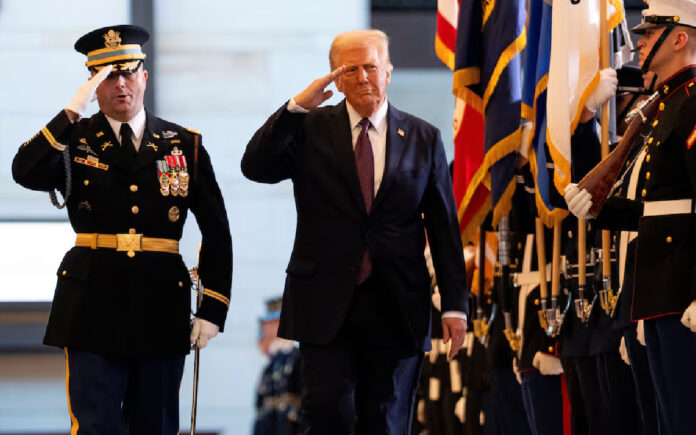Washington: Donald Trump, returning to the presidency, pardoned approximately 1,500 supporters involved in the Jan. 6, 2021, Capitol attack. This swift action, taken just hours after his inauguration, underscores his commitment to reshaping the U.S. government in alignment with his agenda.
Key Actions Following Inauguration
After a day of ceremonial activities, Trump signed multiple executive orders targeting immigration, environmental regulations, and diversity initiatives. While he refrained from immediately implementing tariffs—despite promising 25% duties on Canada and Mexico—he indicated they could be enforced by February 1.
The decision to pardon Jan. 6 defendants, including leaders of the far-right Oath Keepers and Proud Boys, is expected to provoke strong backlash from law enforcement, lawmakers, and those affected by the attack. During the incident, 140 officers were assaulted, many with chemical sprays and blunt objects, while four people lost their lives, including a Trump supporter fatally shot by police.
Inauguration and Controversial Promises
Sworn in at the Capitol Rotunda, the site of the 2021 attack, Trump emphasized his belief in a divine mandate to lead the nation. “I was saved by God to make America great again,” he declared during the ceremony. Trump is the first president in over a century to reclaim the presidency after losing it and the first to serve with a criminal conviction.
Donald Trump took the oath of office to become president of the United States and pledged to rescue America from what he described as years of betrayal and decline https://t.co/HBSUPea6dK pic.twitter.com/EnftRGUnKv
— Reuters (@Reuters) January 21, 2025
Trump’s administration, backed by Republican congressional majorities, swiftly enacted measures targeting immigration. Border authorities halted a program allowing migrants to enter the U.S. legally via scheduled appointments, canceling all pending slots. Trump also declared a national emergency at the U.S.-Mexico border, enabling military deployment, and introduced plans to challenge birthright citizenship, which is likely to face legal hurdles. Mexican drug cartels were designated as terrorist organizations under a new executive order.
“We’re getting rid of all the cancer … caused by the Biden administration,” Trump stated while signing orders aimed at dismantling key Biden-era policies, including those on artificial intelligence, electric vehicles, and remote work for federal employees. A new “Department of Government Efficiency,” headed by Elon Musk, was also established to slash government expenditures.
Reshaping Governance
Trump’s early days in office signaled a dramatic shift in federal operations. Over a dozen senior diplomats were asked to resign, making way for political loyalists. Diversity programs were scrapped, with new policies recognizing only genders assigned at birth. Trump also called for renaming the Gulf of Mexico as the Gulf of America and reiterated his intention to reclaim the Panama Canal.
Also Read | What Happens When a President Doesn’t Swear on a Bible? Trump’s Case
While presenting himself as a unifier, Trump struck a partisan tone, reiterating false claims about election fraud and criticizing Biden’s policies on immigration and foreign affairs. “We have a government that has given unlimited funding to the defense of foreign borders but refuses to defend American borders or its own people,” he said.
High-Profile Attendance
The inauguration saw prominent figures in attendance, including the world’s wealthiest tech leaders—Elon Musk, Jeff Bezos, and Mark Zuckerberg—who shared the stage with Trump’s family and cabinet nominees. Trump pledged to send astronauts to Mars, earning applause from Musk.
Also Read | Greenland’s Geopolitical Value: Trump Pushes for U.S. Acquisition
Outgoing Vice President Kamala Harris and President Joe Biden were also present, alongside former presidents Barack Obama, George W. Bush, and Bill Clinton. Biden’s final acts included pardoning individuals Trump had publicly targeted, such as General Mark Milley, whose Pentagon portrait was removed shortly after Trump’s swearing-in.
Also Read | Trump Launches ‘DOGE’ Group to Slash Government, Sparks Legal Battles
The ceremony, moved indoors due to frigid weather, marked a controversial and historic return to power for Trump, the oldest individual to assume the presidency at 78.



